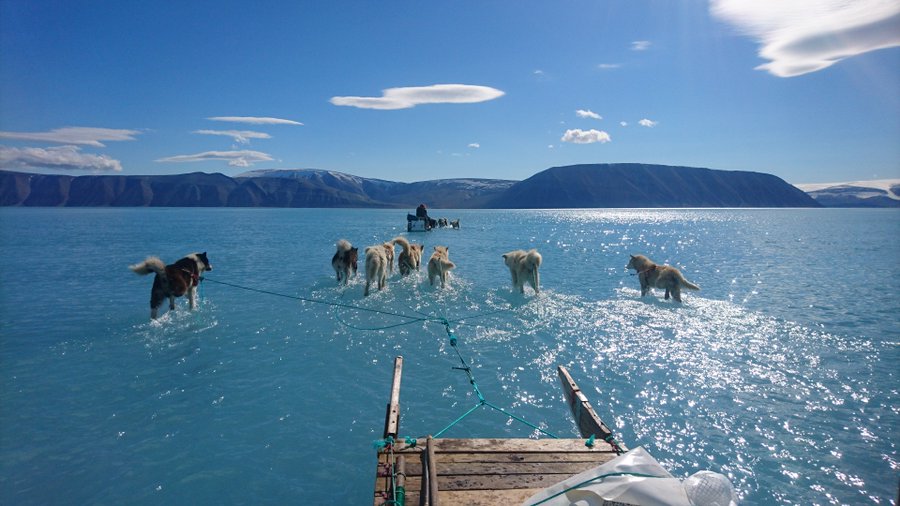Steffen M. Olsen, danish climatologist, went on June 13 on a routine mission through the Inglefield Gulf in northwest Greenland. To his surprise, when he set out with his dog sled, he figured out that the ice sheet was under the water.
He captured an incredible photo, what was shared on Twitter by fellow scientist Rasmus Tonboe and is now trending around the world as a warning about the speed at which Arctic ice is melting.
“This is absolutely extraordinary, to see so much meltwater on top of the ice,” said Rasmus Tonboe.
“Normally, meltwater runs into cracks and percolates through the ice flow, but I have never seen anything like in the photo before.”
Figures from the National Snow & Ice Data Center show that approximately 712,000 km2 of Greenland’s surface has melted on June 12th, more than 470,000 km2 more than the same date in 2018. This was also more than 600,000km2 more than the median average from 1981 to 2010. Over 40% of Greenland experienced melting on that one day alone, with total ice loss estimated to be more than 2 gigatons (equal to 2 billion tons).
This much melting this early in the summer could lead to further records for Greenland ice loss being broken in 2019.
In 2012, Greenland experienced the most melting on record, when, for a few days, 97% of the entire ice sheet indicated surface melting. Those monitoring the ice sheet say 2019 could rival this figure.
Temperatures in Greenland rose to 40 degrees above normal last Wednesday, and open water now exists in places north of Alaska where it seldom, if ever, has in recent times.
Speaking to Euronews, Professor Jason Box, an ice climatologist at the Geological Survey of Denmark and Greenland, explained the significance of continual global warming.
“This extra fresh water that is flooding into the North Atlantic is disrupting ocean circulation patterns, and we don’t fully understand the consequences, but it could bring stronger storms to northwestern Europe’.
However, a lot of regions of the world have experienced extreme weather events because of climate change, such as heat wave in India, the floods in China and the violent storms of Europe in recent days.



